Monthly Archives: March 2022

 My niece, Liz Masterson is a journalism teacher for the Natrona County School District, teaching at Kelly Walsh High School in Casper, Wyoming. She is an excellent teacher and is loved by faculty and students alike. One of the perks that being a teacher has given her is summers off, and things like Spring Break, and other school holidays. That fits in quite well with Liz’s love of travel. In the working world, people get only so many vacation days a year, and I don’t know of any other occupation that gives summers off and yet pays you for a year’s work…not that teachers really get paid what they are worth (most of them anyway.) Some teachers are paid far more than their worth, unfortunately. Liz isn’t one of those, and we, her family, are all very proud of her ability, drive, and dedication. All Liz ever wanted to be was a teacher, and she is an amazing teacher.
My niece, Liz Masterson is a journalism teacher for the Natrona County School District, teaching at Kelly Walsh High School in Casper, Wyoming. She is an excellent teacher and is loved by faculty and students alike. One of the perks that being a teacher has given her is summers off, and things like Spring Break, and other school holidays. That fits in quite well with Liz’s love of travel. In the working world, people get only so many vacation days a year, and I don’t know of any other occupation that gives summers off and yet pays you for a year’s work…not that teachers really get paid what they are worth (most of them anyway.) Some teachers are paid far more than their worth, unfortunately. Liz isn’t one of those, and we, her family, are all very proud of her ability, drive, and dedication. All Liz ever wanted to be was a teacher, and she is an amazing teacher.
This week is spring break, and so Liz and her cousins, Jessi Sawdon, Lindsay Moore, and Kellie Hadlock decided that they all needed a “girl’s trip” to Las Vegas. So, they took Jessi and Lindsay’s daughters, Adelaide Sawdon  and Mackenzie Moore to stay with their grandma and grandpa, Allyn and Chris Hadlock, and then the girls took to the air, flying to Vegas. I’m sure they are having a great time, as especially since Liz’s birthday falls in the middle of their trip, it’s a great was to celebrate. Liz has traveled to, to some amazing places, like Rome and several other places near there. She has also traveled to many places in the United States. Liz loves to go to New York City, Rapid City, and places in Texas, as well as many other places in the United States.
and Mackenzie Moore to stay with their grandma and grandpa, Allyn and Chris Hadlock, and then the girls took to the air, flying to Vegas. I’m sure they are having a great time, as especially since Liz’s birthday falls in the middle of their trip, it’s a great was to celebrate. Liz has traveled to, to some amazing places, like Rome and several other places near there. She has also traveled to many places in the United States. Liz loves to go to New York City, Rapid City, and places in Texas, as well as many other places in the United States.
She has lived an interesting life for sure, but her favorite thing is her fur babies. Liz has three dogs and a cat, and they vie for her attention much of her time at home. She would love to take all three puppies for a walk, but they all want to go different directions. That just doesn’t work, so whenever Liz goes for a walk, only one dog gets to go, unless she puts them in the baby stroller that zips closed, so they can’t get out. The worst problem with that is that they love to bark at all their friends (dog friends) along the trail.

 Liz is an excellent photographer and has a side gig in photography. She has actually taken many of the senior pictures for her students. As a journalism teacher, Liz has been in charge of the yearbook at Kelly Walsh. She also takes all the sports and club pictures…and of course the graduation pictures…quite different in 2020. I don’t know how they would have ever managed the yearbook all these years without Liz’s expertise. She has been an important asset to the school and to everyone else who knows her. Today is Liz’s birthday. Happy birthday Liz!! Have a great day!! We love you!!
Liz is an excellent photographer and has a side gig in photography. She has actually taken many of the senior pictures for her students. As a journalism teacher, Liz has been in charge of the yearbook at Kelly Walsh. She also takes all the sports and club pictures…and of course the graduation pictures…quite different in 2020. I don’t know how they would have ever managed the yearbook all these years without Liz’s expertise. She has been an important asset to the school and to everyone else who knows her. Today is Liz’s birthday. Happy birthday Liz!! Have a great day!! We love you!!
 It seems odd that the daughter of a poet would be an excellent mathematician, but each person has their own gift, and it may or may not be anything like our parents. Being the daughter of a poet, in this case, Lord Byron (George Gordon Byron), it may have seemed unlikely for Ada Byron to be a mathematician, but her mother was Lady Byron (Anne Isabella Milbanke)…a mathematician. So, there you have it…two women in the 1800s who were good at mathematics. To top it off, it was uncommon for women to go very high in education in those days, much less for the aristocrat set. Women were usually trained for things like running a household and raising children…and maybe the occasional schoolteacher.
It seems odd that the daughter of a poet would be an excellent mathematician, but each person has their own gift, and it may or may not be anything like our parents. Being the daughter of a poet, in this case, Lord Byron (George Gordon Byron), it may have seemed unlikely for Ada Byron to be a mathematician, but her mother was Lady Byron (Anne Isabella Milbanke)…a mathematician. So, there you have it…two women in the 1800s who were good at mathematics. To top it off, it was uncommon for women to go very high in education in those days, much less for the aristocrat set. Women were usually trained for things like running a household and raising children…and maybe the occasional schoolteacher.
Ada Byron was the only child of Lord and Lady Byron. He had other children, but they were born out of wedlock to other women. The truth is that Ada’s mathematical prowess wasn’t an accident…it was a calculated plan by her mother, and one to which Adad didn’t object. A month after Ada was born, her parents separated, and Byron left England forever, and caused Ada’s mother to be very bitter. He wrote a poem, commemorating the parting, four months later. The poem begins, “Is thy face like thy mother’s my fair child! ADA! sole daughter of my house and heart?” When Ada was eight years old, her father died in Greece. Ada’s mother, who had never forgiven Lord Byron for leaving, remained bitter against him, even in death. In retaliation for his unfaithfulness, she promoted Ada’s interest in mathematics and logic in an effort to prevent her from developing her father’s perceived “insanity.” Nevertheless, Ada’s mother could not curb her daughter’s curiosity about her father. She remained interested in him for the rest of her life, but probably had to keep her curiosity to herself. When Ada had children of her own, she named one of her sons Byron, after her father. She also made it clear that when she died, she was to be buried next to her father, and upon her death, her request was honored.
Ada’s childhood was a hard one, because she was often ill. Still, Ada pursued her studies with great care, and  she persevered even in times of illness. I think that like her mother, she preferred logic and mathematics to poetry all along. At the age of 17 Ada was introduced to Mary Somerville, a remarkable woman who translated Pierre-Simon LaPlace’s works into English, and whose texts were used at Cambridge. Pierre-Simon, marquis de Laplace was a French scholar and polymath whose work was important to the development of engineering, mathematics, statistics, physics, astronomy, and philosophy. Though Somerville encouraged Ada in her mathematical studies, she also attempted to put mathematics and technology into an appropriate human context. It was at a dinner party at Somerville’s home that Ada heard in November 1834, about Babbage’s ideas for a new calculating engine, the Analytical Engine. His thought was, “what if a calculating engine could not only foresee but could act on that foresight?” Ada was impressed by the “universality of his ideas.” She was pretty much alone in her interest.
she persevered even in times of illness. I think that like her mother, she preferred logic and mathematics to poetry all along. At the age of 17 Ada was introduced to Mary Somerville, a remarkable woman who translated Pierre-Simon LaPlace’s works into English, and whose texts were used at Cambridge. Pierre-Simon, marquis de Laplace was a French scholar and polymath whose work was important to the development of engineering, mathematics, statistics, physics, astronomy, and philosophy. Though Somerville encouraged Ada in her mathematical studies, she also attempted to put mathematics and technology into an appropriate human context. It was at a dinner party at Somerville’s home that Ada heard in November 1834, about Babbage’s ideas for a new calculating engine, the Analytical Engine. His thought was, “what if a calculating engine could not only foresee but could act on that foresight?” Ada was impressed by the “universality of his ideas.” She was pretty much alone in her interest.
In 1835, she married William King, who was made Earl of Lovelace in 1838. With that, Ada became Countess of Lovelace. Many would think that would have been the end of her mathematical career, but Augusta Ada King, Countess of Lovelace was first an English mathematician and writer. Babbage worked on plans for this new engine and reported on the developments at a seminar in Turin, Italy in the autumn of 1841. An Italian, named Menabrea, wrote a summary of what Babbage described and published an article in French about the development. By 1843, Ada, now the married mother of three children (Byron, Anne, and Ralph) under the age of eight, translated Menabrea’s article. When she showed Babbage her translation, he suggested that she should add her own notes to the translation, which turned out to be three times the length of the original article. Letters filled with fact and fantasy flew back and forth between Babbage and Ada. In her article, published in 1843, Lady Lovelace’s prescient comments included her predictions that such a machine might be used to compose complex music, to produce graphics, and would be used for both practical and scientific use. 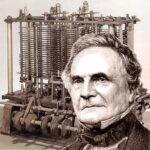 While the world thought that just wishful thinking, Ada was correct. In fact, she published the first algorithm intended to be carried out by such a machine. When inspired Ada could be very focused and a mathematical taskmaster. She suggested to Babbage writing a plan for how the engine might calculate Bernoulli numbers. This plan is now seen as the first “computer program” and as a result, she is often regarded as the first computer programmer. A software language developed by the US Department of Defense was named “Ada” in her honor in 1979. Ada Lovelace, died on November 27, 1852, after battling with Uterine Cancer. Like her father, she died young, at the same age he had…36 years old. Ada was abandoned by her husband because of cancer shortly before her death…what a creep he was!!
While the world thought that just wishful thinking, Ada was correct. In fact, she published the first algorithm intended to be carried out by such a machine. When inspired Ada could be very focused and a mathematical taskmaster. She suggested to Babbage writing a plan for how the engine might calculate Bernoulli numbers. This plan is now seen as the first “computer program” and as a result, she is often regarded as the first computer programmer. A software language developed by the US Department of Defense was named “Ada” in her honor in 1979. Ada Lovelace, died on November 27, 1852, after battling with Uterine Cancer. Like her father, she died young, at the same age he had…36 years old. Ada was abandoned by her husband because of cancer shortly before her death…what a creep he was!!
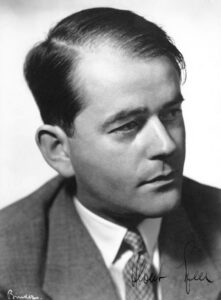 As Hitler continued his reign of terror over the people of Germany, in his quest to rule the world, he decided that he needed to destroy much of the German infrastructure so that the Allied forces couldn’t use it as they penetrated deep withing the borders of Germany. Hitler must have known by now that he was losing this war, even in his crazed state, so he was trying to find a way to turn the tide.
As Hitler continued his reign of terror over the people of Germany, in his quest to rule the world, he decided that he needed to destroy much of the German infrastructure so that the Allied forces couldn’t use it as they penetrated deep withing the borders of Germany. Hitler must have known by now that he was losing this war, even in his crazed state, so he was trying to find a way to turn the tide.
The Nero Decree (German: Nerobefehl) was the order issued by Hitler on March 19, 1945, right after the Allies captured the final bridge on the Rhine River that allowed access into Germany. The Nero Decree ordered the destruction of large numbers of bridges in Germany. The official name was Decree Concerning Demolitions in the Reich Territory (Befehl betreffend Zerstörungsmaßnahmen im Reichsgebiet), but that is rather a long name, so it became known as the Nero Decree, after the Roman Emperor Nero, who, according to an apocryphal story, “engineered the Great Fire of Rome in 64 AD.”

This act would have wiped out all of Germany’s industry and infrastructure just to keep it from falling under Allied control. Hitler didn’t care about that or about the people who would be affected. The actual task of carrying out such destruction fell to Germany’s armaments minister…and Hitler’s friend, Albert Speer. Speer knew that to follow the order would have a ruinous effect on the German people, so like Von Choltitz, who had disobeyed the order to burn Paris, Speer deliberately disobeyed the order of his friend, who he suspected was mentally unstable. In addition, Speer also issued encrypted alternate orders to delay the destruction. In the end, the Nero Decree wasn’t carried out at all, something which I’m quite certain drove Hitler totally insane.
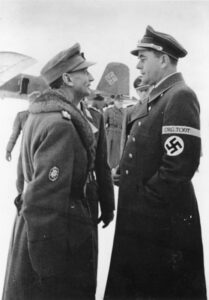
Speer was one of the highest-ranking members of German leadership to survive the war. He attempted to promote himself as someone who stood up to Hitler. While history does credit him with refusing to follow the Nero Decree, it did not completely exonerate him. Speer was an architect, and he wanted to preserve many buildings he had designed. Berthold Konrad Hermann Albert Speer, born March 19, 1905, in Mannheim, into an upper-middle-class family. He was the second of three sons of Luise Máthilde Wilhelmine (Hommel) and Albert Friedrich Speer. He was a German architect who served as the Minister of Armaments and War Production in Nazi Germany during most of World War II. He was also a close ally of Adolf Hitler, a relationship which would cause him to be convicted at the Nuremberg trials and sentenced to 20 years in prison. Speer returned to London in 1981 to participate in the BBC Newsnight program. He suffered a stroke and died in London on September 1, 1981.
 While there were those who thought it wasteful to build the lavish Temppeliaukio Church, a Lutheran church in the Toolo neighborhood of Helsinki, Finland. Before the construction of the church was even fully complete it made headlines when on the nights of July 16 and 17, 1968 a group of Christian students painted in large letters “BIAFRA” in several places on the exterior walls of the building to bring attention to the famine then going on in Biafra, which had declared independence from Nigeria in 1967. The students, part of the 1960s student revolutionary movement, thought they were doing a service to the people of Biafra, but they were simply young and naive, and they didn’t know that one thing had nothing to do with the other, because were the funds not used in the church, they would have been used for something else. Building the church or not building the church would make no difference for the people of Biafra.
While there were those who thought it wasteful to build the lavish Temppeliaukio Church, a Lutheran church in the Toolo neighborhood of Helsinki, Finland. Before the construction of the church was even fully complete it made headlines when on the nights of July 16 and 17, 1968 a group of Christian students painted in large letters “BIAFRA” in several places on the exterior walls of the building to bring attention to the famine then going on in Biafra, which had declared independence from Nigeria in 1967. The students, part of the 1960s student revolutionary movement, thought they were doing a service to the people of Biafra, but they were simply young and naive, and they didn’t know that one thing had nothing to do with the other, because were the funds not used in the church, they would have been used for something else. Building the church or not building the church would make no difference for the people of Biafra.
The Temppeliaukio Church was designed by architects and brothers Timo and Tuomo Suomalainen and opened in 1969. It was uniquely built directly into solid rock. It is known as the “Church of the Rock” and “Rock Church.” Plans for the Temppeliaukio/Tempelplatsen (Temple square) began as early as the 1930s when a plot of land was selected for the building. It was decided to hold a competition for the design of the church. The plan by JS Siren, who was the winner of the second competition to design the architecture of the church, was interrupted in its early stages when World War II began in 1939. After the war, that design was scrapped and there was another architectural competition. That competition was won by Timo Suomalainen and Tuomo Suomalainen in 1961. Even that plan had to be somewhat changed when, for economic reasons, it was scaled  back, and the interior space of the church was reduced to about one-quarter of its original plan. I suppose that when you think about it, cutting a church into solid rock would be a complicated and costly operation. The long-awaited Construction finally began in February 1968, and the rock-temple was completed for consecration in September 1969.
back, and the interior space of the church was reduced to about one-quarter of its original plan. I suppose that when you think about it, cutting a church into solid rock would be a complicated and costly operation. The long-awaited Construction finally began in February 1968, and the rock-temple was completed for consecration in September 1969.
As planned, the interior was carved out of solid rock. It is beautifully bathed in natural light which enters through the skylight surrounding the center copper dome. Strangely, the church reminds me of a spaceship, a little bit anyway, but I find it to be beautiful and quite peaceful too. The church is used frequently as a concert venue due to its excellent natural acoustics. The acoustic quality is created by the rough, virtually unworked rock surfaces. The iconic rock walls were not included in the original competition entry, even though the Suomalainen brothers had considered the idea, because they believed that it was too radical for the competition jury. I suppose thy wondered if it would be looked at as sacrilegious or maybe too backward to be beautiful… how very wrong they were about that. But when conductor Paavo Berglund shared his knowledge of acoustics from some of the best music halls and the acoustical engineer Mauri Parjo gave requirements for the wall surfaces, the Suomalainen brothers discovered that they could fulfill all the requirements for the acoustics by leaving the rock walls exposed in the Church Hall. It was also a financial savings both then and, in the future, as it eliminated the need to paint the interior.
Today, the Temppeliaukio church is one of the most popular tourist attractions in the city, with half a million people visiting it annually. The stone-hewn church is located in the heart of Helsinki, giving people easy access  to its beauty and solace. Maintaining the original character of the square is the fundamental concept behind the building. The idiosyncratic choice of form has made it a favorite with professionals and aficionados of architecture. I can imagine that many of them come to see it simply to admire the perfection of this almost artistic masterpiece. The church furnishings were designed by the architects. Organ builder Veikko Virtanen manufactured the church organ, which has 43 stops and 3001 pipes. In an unusual anomaly, there are no bells at the church. Instead, a recording of bells composed by Taneli Kuusisto is played via loudspeakers on the exterior wall calls parishioners to the services.
to its beauty and solace. Maintaining the original character of the square is the fundamental concept behind the building. The idiosyncratic choice of form has made it a favorite with professionals and aficionados of architecture. I can imagine that many of them come to see it simply to admire the perfection of this almost artistic masterpiece. The church furnishings were designed by the architects. Organ builder Veikko Virtanen manufactured the church organ, which has 43 stops and 3001 pipes. In an unusual anomaly, there are no bells at the church. Instead, a recording of bells composed by Taneli Kuusisto is played via loudspeakers on the exterior wall calls parishioners to the services.
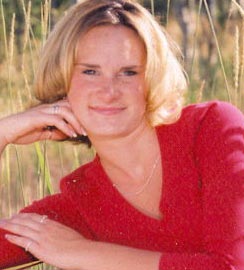
 I first met my niece, Amanda Reed in 2002, when she was a 16-year-old girl with “stars in her eyes” as they say. Her dad, Mike Reed married my sister, Caryl that year, and they became a blended family. Life was mostly in her future then, because she was still in high school, but that was 20 years ago, and a lot has changed. Amanda went to work at the Rawlins National Bank at a young age and has worked her way up to the pretty prestigious position of BSA Agent, which is a part of the law enforcement area of the bank. She is involved in deterring fraud, money laundering, and such. I don’t claim to know all she does, but I know that it is an important part of the banking system.
I first met my niece, Amanda Reed in 2002, when she was a 16-year-old girl with “stars in her eyes” as they say. Her dad, Mike Reed married my sister, Caryl that year, and they became a blended family. Life was mostly in her future then, because she was still in high school, but that was 20 years ago, and a lot has changed. Amanda went to work at the Rawlins National Bank at a young age and has worked her way up to the pretty prestigious position of BSA Agent, which is a part of the law enforcement area of the bank. She is involved in deterring fraud, money laundering, and such. I don’t claim to know all she does, but I know that it is an important part of the banking system.
Also, since high school, she and her partner, Sean Mortensen have a little family of their own, with their daughter Jadyn coming on the scene almost 18 years ago. They have done and exceptional job of raising their beautiful girl, who will be going to the University of Wyoming in the fall on a rodeo scholarship.
That said, Amanda and Sean are about to become empty nesters, and I just wonder how they will feel about that, because I have really never seen parents who have included their child in every aspect of their lives like these two have. Jadyn is a very well-adjusted kid, because of how her parents raised her, and she is someone they can both be very proud of. Now, with Jadyn off to college, life is about to take another turn for Amanda and Sean.
They have always been involved in whatever Jadyn is doing, and she was involved in their activities. From Summer sports to Winter sports and everything in between, this active family stayed very busy, and I’m sure that even with Jadyn away at college, that will not change. When they aren’t traveling to some of her rodeo events, I’m sure they will still be hanging out with their large group of friends at the lake or in the mountains, 
 depending on their plans for the day and the season it is. Amanda and Sean have a very active social life, and they are always on the go. The only difference now will be that they will have one less person in their entourage, and while they are happy for their daughter, I’m sure Amanda and Sean are a little bit sad for themselves too. Being an empty nester is an adjustment, no matter how you slice it. Today is Amanda’s birthday. Happy birthday Amanda!! Have a great day!! We love you!!
depending on their plans for the day and the season it is. Amanda and Sean have a very active social life, and they are always on the go. The only difference now will be that they will have one less person in their entourage, and while they are happy for their daughter, I’m sure Amanda and Sean are a little bit sad for themselves too. Being an empty nester is an adjustment, no matter how you slice it. Today is Amanda’s birthday. Happy birthday Amanda!! Have a great day!! We love you!!
 There have been many deadly wars in American history, but the deadliest war of them all took place during the 1670s. Technically, that was before the United States was even a nation. King Philip’s War, named for Metacom, the Wampanoag chief who adopted the name Philip because of the friendly relations between his father Massasoit and the Mayflower Pilgrims. The war pitted colonists and their indigenous allies (members of the Mohegan and Mohawk nations) in New England, against Philip’s (Metacom’s) Indigenous populations who didn’t want to be told what to do by the colonists in America. King Philip’s War was sometimes called the First Indian War, Metacom’s War, Metacomet’s War, Pometacomet’s Rebellion, or Metacom’s Rebellion. The conflict lasted from 1675 to 1678. The war continued in the most northern reaches of New England until the signing of the Treaty of Casco Bay on April 12, 1678.
There have been many deadly wars in American history, but the deadliest war of them all took place during the 1670s. Technically, that was before the United States was even a nation. King Philip’s War, named for Metacom, the Wampanoag chief who adopted the name Philip because of the friendly relations between his father Massasoit and the Mayflower Pilgrims. The war pitted colonists and their indigenous allies (members of the Mohegan and Mohawk nations) in New England, against Philip’s (Metacom’s) Indigenous populations who didn’t want to be told what to do by the colonists in America. King Philip’s War was sometimes called the First Indian War, Metacom’s War, Metacomet’s War, Pometacomet’s Rebellion, or Metacom’s Rebellion. The conflict lasted from 1675 to 1678. The war continued in the most northern reaches of New England until the signing of the Treaty of Casco Bay on April 12, 1678.
Massasoit, Metacom’s father had maintained a long-standing alliance with the colonists…since the days of the Mayflower, when the Wampanoag Indians and the pilgrims helped each other survive that first awful winter. When Metacom (1638–1676), Massasoit’s younger son, became tribal chief in 1662 after Massasoit’s death, he forsook his father’s alliance between the Wampanoags and the colonists after repeated violations by the colonists. The colonists insisted that the 1671 peace agreement should include the surrender of Native guns. They felt threatened by armed Indians. Tensions increased when three Wampanoags were hanged in Plymouth Colony in 1675 for the murder of another 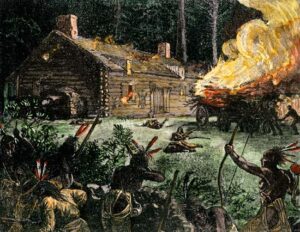 Wampanoag. Suddenly, native raiding parties were attacking homesteads and villages throughout Massachusetts, Rhode Island, Connecticut, and Maine. The attacks continued over the next six months, and the colonial militia retaliated. While the Narragansetts remained neutral, some of them participated in raids of colonial strongholds and militia, so colonial leaders claimed they were in violation of peace treaties.
Wampanoag. Suddenly, native raiding parties were attacking homesteads and villages throughout Massachusetts, Rhode Island, Connecticut, and Maine. The attacks continued over the next six months, and the colonial militia retaliated. While the Narragansetts remained neutral, some of them participated in raids of colonial strongholds and militia, so colonial leaders claimed they were in violation of peace treaties.
The colonies assembled the largest army New England had mustered to that date, consisting of 1,000 militia and 150 Native allies. In November of 1675, Governor Josiah Winslow marshaled them to attack the Narragansetts. They attacked and burned Native villages throughout Rhode Island territory, culminating with the attack on the Narragansetts’ main fort in the Great Swamp Fight. It is estimated that 600 Narragansetts were killed, and their coalition was taken over by Narragansett sachem Canonchet. They pushed back the borders of the Massachusetts Bay, Plymouth, and Rhode Island colonies, burning towns as they went, including Providence in March 1676. The colonial militia fought back hard and soon overwhelmed the Native coalition. By the end of the war, the Wampanoags and their Narragansett allies were almost completely wiped out. On  August 12, 1676, Metacom fled to Mount Hope, where he was killed by the militia. The war was the greatest tragedy in seventeenth-century New England. Many believe it was the deadliest war in Colonial American history. In the space of little more than a year, 12 of the region’s towns were destroyed and many more were damaged. The economy of Plymouth and Rhode Island Colonies was all but ruined. They lost over a tenth of all men available for military service. More than half of New England’s towns were attacked by Natives. Hundreds of Wampanoags and their allies were publicly executed or enslaved, and the Wampanoags were left effectively landless and destitute.
August 12, 1676, Metacom fled to Mount Hope, where he was killed by the militia. The war was the greatest tragedy in seventeenth-century New England. Many believe it was the deadliest war in Colonial American history. In the space of little more than a year, 12 of the region’s towns were destroyed and many more were damaged. The economy of Plymouth and Rhode Island Colonies was all but ruined. They lost over a tenth of all men available for military service. More than half of New England’s towns were attacked by Natives. Hundreds of Wampanoags and their allies were publicly executed or enslaved, and the Wampanoags were left effectively landless and destitute.
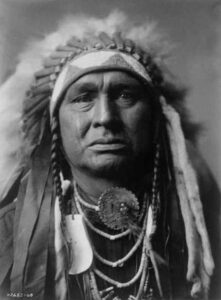 Joe Medicine Crow did not set out to become a war chief…much less the last surviving war chief, but when World War II drew the Unted States into the fight, Medicine Crow knew he couldn’t just sit back in his college dorm and refuse to help. Joe Medicine Crow was born on a reservation near Lodge Grass, Montana in 1913. Raised in the warrior tradition of the Crow, he was never one to shirk his duty in battle. He had some great warrior role models to fashion himself after, like his step-grandfather, who had been a scout for Custer at the infamous Battle of Little Bighorn, and his paternal grandfather Chief Medicine Crow who was one of the greatest Crow war heroes.
Joe Medicine Crow did not set out to become a war chief…much less the last surviving war chief, but when World War II drew the Unted States into the fight, Medicine Crow knew he couldn’t just sit back in his college dorm and refuse to help. Joe Medicine Crow was born on a reservation near Lodge Grass, Montana in 1913. Raised in the warrior tradition of the Crow, he was never one to shirk his duty in battle. He had some great warrior role models to fashion himself after, like his step-grandfather, who had been a scout for Custer at the infamous Battle of Little Bighorn, and his paternal grandfather Chief Medicine Crow who was one of the greatest Crow war heroes.
Before the war broke out, Medicine Crow enrolled at the University of Southern California and earned a master’s degree for his thesis, “The Effects of European Culture Contacts Upon the Economic, Social, and Religious Life of the Crow Indians.” With that, he became the first Crow to earn a master’s degree. After his graduation, he moved to Oregon to work at a Native American school and planned to pursue his Ph D, but then World War II broke out. Medicine Crow told a reporter for the Billings Gazette, “I had an uncle who had other plans for me…Uncle Sam.”
Medicine Crow hadn’t planned on entering the military, but he knew how to fight, and even while he was doing his duty to his country, he was still very aware of his family history. When he was a boy, his grandfather, Yellowtail put him through traditionally rigorous physical training meant to toughen him up. This included running in the snow barefoot and swimming in freezing rivers. His childhood was spent undergoing hardcore Spartan-style feats of strength, piledriving buffalo, riding horses bareback, swimming through mighty rivers, punching things, and running barefoot through snow-covered plains “uphill both ways.” He was taught to control his fear in the face of imminent peril, learned to hunt dangerous animals by himself, and trained his body to survive prolonged exposure to extreme temperatures. This training made him uniquely qualified for the hardships of a foot soldier. He came from a long line of famous warriors, and he kept them in mind when he was sent to Germany. He said, “I had a legacy to live up to.” Still, it was not something he told people about. That was his own legacy to live up to, and it was private. Throughout the war, he wore his war paint under his uniform, and he tucked a sacred yellow eagle feather under his helmet. He was determined to bring honor to his country and to his Crow people.
After the war, he worked for the Crow tribe and later became an appraiser for the Bureau of Indian Affairs, while also working as a Crow historian. While he didn’t get to go back to college, the University of Southern California (his alma mater) eventually awarded him an honorary doctorate in 2003, a degree I think he earned quite honorably.
“War Chief of the Crow Indians” isn’t a title that is given to just any warrior or chief. You don’t become a War Chief just because of your longevity of years or your physical strength. It’s an ancient, prestigious honorific bestowed only upon the bravest, the strongest warrior chiefs, and the only way to attain this hallowed title is by proving yourself in combat and unlocking the four achievements the Crow believed to be the most “insanely difficult” things a warrior can attempt in battle. These four major coups…leading a successful war party on a raid, capturing an enemy’s weapon, touching an enemy without killing him, and stealing an enemy’s horse. Some of those may sound odd to us, but to the Crow tribe, these were indeed major coups. These were difficult and dangerous tasks to attempt. In fact, they required that he put his life on the line by voluntarily bringing himself face-to-face with at least one warrior who is presumably in the process of actively trying to kill you without giving it a second thought. It was the Crow tribe’s way of ensuring that the chief leading them into battle was the bravest and best there was…and Joseph Medicine Crow was just that…the bravest and the best.
As an infantry scout, Private Medicine Crow got the opportunity to lead a group of men into battle in snow-covered battlefields of Western France while the Allies made their push from Paris towards Berlin…his first coup. It was during one particularly nasty portion of the battle for the Rhine, that Medicine Crow’s commanding officer ordered him to take a team of seven soldiers and lead them across a field of barbed wire, bullets, and artillery fire, grab some dynamite from an American position that had been utterly annihilated, and then assault the German bunkers and blow them up with TNT. It was a suicide mission, but according to Medicine Crow, his CO’s exact words were, “if anyone can do this, it’s probably you.”
His second and third coups followed quickly, when after being separated from his unit, Medicine Crow was sprinting through a back yard. He ran head on into a Nazi, who immediately lost his weapon. Not wanting to kill an unarmed man, Medicine Crow threw down his own weapon and proceeded to fist fight the Nazi. When the Nazi almost got the upper hand, Medicine Crow turned the tables and began to choke the life out of the guy…until the man started screaming for his mommy. That took “the kill” out of Medicine Crow, so he let the guy 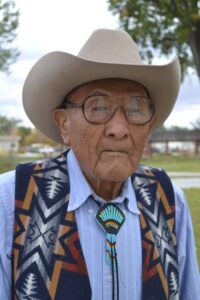 live. He took he German (and his rifle) as a prisoner of war.
live. He took he German (and his rifle) as a prisoner of war.
The fourth coup came in a rather unusual way. Joe and his men on a scouting mission deep behind enemy lines. While surveying the landscape for enemy troop movements, the small team of recon experts just happened to come across a small farm where some senior members of the German officer staff were hiding out…with their awesome thoroughbred racehorses. Seriously, how could Joseph Medicine Crow pass that up. So, he just had to steal them…and with that he had met all the requirements for becoming a “War Chief of the Crow Indians.” In August of 2009, Chief Medicine Crow was awarded the Presidential Medal of Freedom…the highest honor awarded to American civilians…for his combined military service and all the work he has done to help improve the lives of the people of the Crow people. The 95-year-old Medicine Crow personally led the ceremonial dance after the ceremony. Joseph Medicine Crow was the last surviving War Chief of the Crow Indians when he died in 2016, at 102 years old.

 After high school, my grandnephew, Weston Moore decided that he wanted to make a chenge in his life. So, he and a couple of friends made the move last April from Powell, Wyoming to Butte, Montana. They just wanted to get out of a small town and try living in a bigger city for a while. It’s only 4.5 hours from Powell to Butte, but it’s far enough to make any kind of regular visits difficult. It’s enough to give these young men a taste of adult life, and they are doing very well with it. They have jobs, and they are making friends…basically settling in well. Weston has come home a couple of times for visits, but it’s just not the same for his family…parents Machelle and Steve Moore, and brother, Easton Moore. His family wishes it wasn’t quite so far.
After high school, my grandnephew, Weston Moore decided that he wanted to make a chenge in his life. So, he and a couple of friends made the move last April from Powell, Wyoming to Butte, Montana. They just wanted to get out of a small town and try living in a bigger city for a while. It’s only 4.5 hours from Powell to Butte, but it’s far enough to make any kind of regular visits difficult. It’s enough to give these young men a taste of adult life, and they are doing very well with it. They have jobs, and they are making friends…basically settling in well. Weston has come home a couple of times for visits, but it’s just not the same for his family…parents Machelle and Steve Moore, and brother, Easton Moore. His family wishes it wasn’t quite so far.


In February, Weston realized a longtime dream of his…adopting a fur baby. The family all met up in Billings for the day so Weston could pick up Kuvo…a Malamute puppy. Kuvo is so cute and very lovable. Apparently, Kuvo is quite a character, and keeps Weston and the guys quite entertained with his antics. Kuvo really is a beautiful dog. He reminds me of the dogs on “Snow Dogs.” Who knows maybe he will eventually have a team of Malamute dogs, and he can take them to Alaska for the Iditarod…well, you never know…it could happen.
Weston has been enjoying bachelorhood and is in no hurry to get tied down. He is just enjoying his freedom and relaxing. He recently got a new gun, so I’m sure he’s been out doing some target practice. And speaking of target practice, on one visit home, Weston and his dad went out in the back 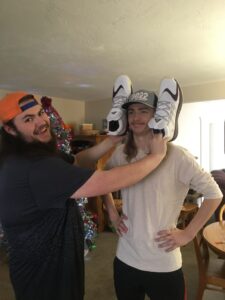
 yard for some knife throwing practice. It’s an interesting idea, but not that one I think I would be very good at, but then the Moore family are very outdoorsy, so they like that stuff.
yard for some knife throwing practice. It’s an interesting idea, but not that one I think I would be very good at, but then the Moore family are very outdoorsy, so they like that stuff.
Weston also likes video games, like most people his age. And he loves posting funny stuff online. That doesn’t mean he never posts serious stuff too, but he has a great sense of humor, and the funny stuff makes him happy. Weston is usually wearing a smile, and that makes those around him smile too. People just naturally like to be around him. While his family misses him, we all wish him well in Butte, or wherever he might eventually land. Today is Weston’s birthday. Happy birthday Weston!! Have a great day!! We love you!!
 Sometimes, you can win a battle with nothing more than a good bluff. In 1369 AD, the town of Monção, in northern Portugal, which is famous for a local variety of red wines, became famous for something else…the medieval legend of Deu-la-Deu. King Peter of Castile and Leon, also known as “Peter the Cruel,” passed away that year, setting off a succession crisis. You would think that the succession to the throne would be pretty cut and dried, but King Peter had an illegitimate half-brother named Henry of Trastámara, who was crowned king. Portuguese King Ferdinand I, who was also one of the claimants. In retaliation for Ferdinand’s claim to the Spanish throne, Henry went to war with Portugal. Henry was determined to remove any thought of claiming the throne from King Ferdinand I and possibly take his life in the process.
Sometimes, you can win a battle with nothing more than a good bluff. In 1369 AD, the town of Monção, in northern Portugal, which is famous for a local variety of red wines, became famous for something else…the medieval legend of Deu-la-Deu. King Peter of Castile and Leon, also known as “Peter the Cruel,” passed away that year, setting off a succession crisis. You would think that the succession to the throne would be pretty cut and dried, but King Peter had an illegitimate half-brother named Henry of Trastámara, who was crowned king. Portuguese King Ferdinand I, who was also one of the claimants. In retaliation for Ferdinand’s claim to the Spanish throne, Henry went to war with Portugal. Henry was determined to remove any thought of claiming the throne from King Ferdinand I and possibly take his life in the process.
Part of Henry’s plan that year included laying siege to the Portuguese city of Monção, which was a fortified castle. They managed to catch the city while its lord, Vasco Gomes de Abreu, was away. The lord’s wife, Deu-la-Deu was put in charge of the defense. When I heard that, I wondered how they expected her to accomplish that, because most of the women, even the queens and ladies were pretty much there for their beauty and the children they bore…heirs to the throne. It just didn’t seem to fit into a role she would normally be an expert at, but that assumption proved to be very wrong. Deu-la-Deu would prove them all wrong.
Medieval castles were often designed to withstand long sieges in those days, but Monção’s food supplies were low, and the Spanish army was ready to starve the city. They had blocked the supply lines and were prepared to wait out the unfortunate inabitants of the city, who they fully expected to begin starving to death. The reality was that the people were about to starve to death, but the lady of the castle was a very wise woman. Deu-la- Deu came up with an amazing plan of defense, and one that would probably never have crossed the mind of the men, kings, lords, or army generals alike. Even though the city was almost out of food, the plan was to take the city’s remaining flour, bake it into two loaves of bread. Then Deu-la-Deu took them up to the castle walls, and threw them at the Spanish army, saying, “If you need any more, let us know.” The Spanish believed the city was well stocked and so the simply gave up and left. The siege was over, just like that. It is the funniest end to a siege I can imagine. Since that amazing incident, Deu-la-Deu Martins was considered a heroine in Portugal and a statue was erected in her honor.
Deu came up with an amazing plan of defense, and one that would probably never have crossed the mind of the men, kings, lords, or army generals alike. Even though the city was almost out of food, the plan was to take the city’s remaining flour, bake it into two loaves of bread. Then Deu-la-Deu took them up to the castle walls, and threw them at the Spanish army, saying, “If you need any more, let us know.” The Spanish believed the city was well stocked and so the simply gave up and left. The siege was over, just like that. It is the funniest end to a siege I can imagine. Since that amazing incident, Deu-la-Deu Martins was considered a heroine in Portugal and a statue was erected in her honor.

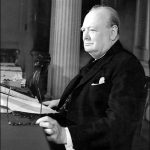 Most soldiers know that when you are trying to sneak up on your enemy, it’s probably best to leave the bagpipe playing at home. Nevertheless, John “Mad Jack” Churchill, who was one of the most colorful and unusual soldiers to fight in World War II, might find just about anything…you just never knew. The British-born “Mad Jack” Churchill had no known relation to Prime Minister Winston Spencer-Churchill, although I would not be surprised to find there was a relation. He was known for carrying a Scottish Claymore Sword into battle, and felt that any officer who didn’t have one while going into battle, was basically out of uniform. “Mad Jack”was also an avid archer and bagpipe player and brought both of these hobbies onto the battlefield.
Most soldiers know that when you are trying to sneak up on your enemy, it’s probably best to leave the bagpipe playing at home. Nevertheless, John “Mad Jack” Churchill, who was one of the most colorful and unusual soldiers to fight in World War II, might find just about anything…you just never knew. The British-born “Mad Jack” Churchill had no known relation to Prime Minister Winston Spencer-Churchill, although I would not be surprised to find there was a relation. He was known for carrying a Scottish Claymore Sword into battle, and felt that any officer who didn’t have one while going into battle, was basically out of uniform. “Mad Jack”was also an avid archer and bagpipe player and brought both of these hobbies onto the battlefield.
Churchill volunteered for Great Britain’s first-ever commando unit in 1941, and he participated in covert operations in Italy and Norway. In one Norway operation, he played his bagpipes on the landing craft as they approached the shore, then picked up his sword and attacked. In 1944, “Mad Jack” was on assignment in Yugoslavia to assist with the communist partisans under Josip “Tito” Broz, and that was when his infamous bagpipe incident happened.
During a mission to attack a German position on the Island of Brac, “Mad Jack” and his men advanced under heavy fire. In the end, he was the only one left alive. After running out of bullets, and in typical “Mad Jack” style, he picked up his bagpipe and played “Will Ye No Come Back Again?,l.” It was an 18th-century song celebrating the Jacobite Prince Charles III’s escape from being captured by the British monarchy.
Unimpressed, the Germans knocked him out with an explosion and captured him, but they spared his life…not because of his bagpipe prowess, however, but because they thought he was related to Prime Minister Winston Spencer-Churchill. They thought that having a relative of the prime minister would provide them with sone leverage. Unfortunately for them, as far as anyone knew there was no connection. “Mad Jack” was placed in a prison camp, from which he escaped captivity twice before making it home.
Churchill married Rosamund Margaret Denny, the daughter of Sir Maurice Edward Denny and granddaughter of Sir 
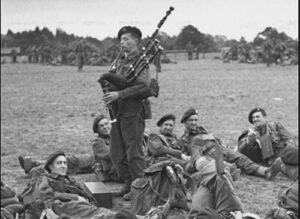 Archibald Denny, on March 8, 1941. They had two children, Malcolm John Leslie Churchill, born 1942, and Rodney Alistair Gladstone Churchill, born 1947. He also had a grandson named James Also stair Gladstone Churchill. “Mad Jack” lived a long and happy life. Nevertheless, I seriously doubt if any part of it was as crazy as the time he spent in World War I. He passed away on March 8, 1996 at 89 years old, in the county of Surrey.
Archibald Denny, on March 8, 1941. They had two children, Malcolm John Leslie Churchill, born 1942, and Rodney Alistair Gladstone Churchill, born 1947. He also had a grandson named James Also stair Gladstone Churchill. “Mad Jack” lived a long and happy life. Nevertheless, I seriously doubt if any part of it was as crazy as the time he spent in World War I. He passed away on March 8, 1996 at 89 years old, in the county of Surrey.

